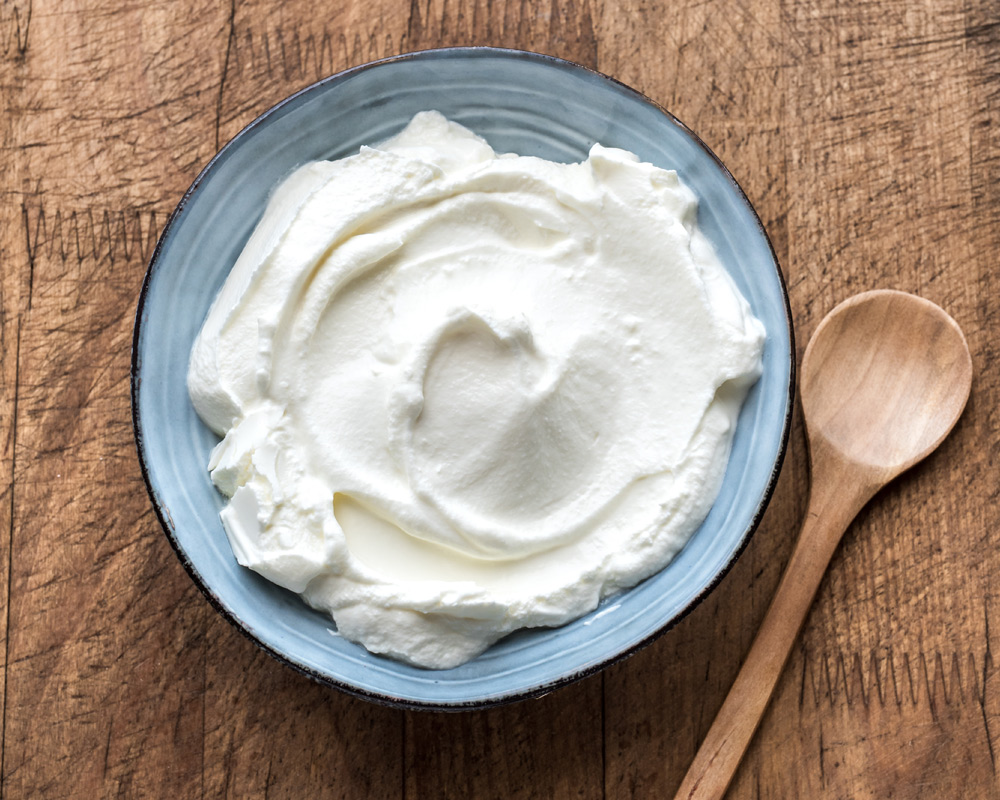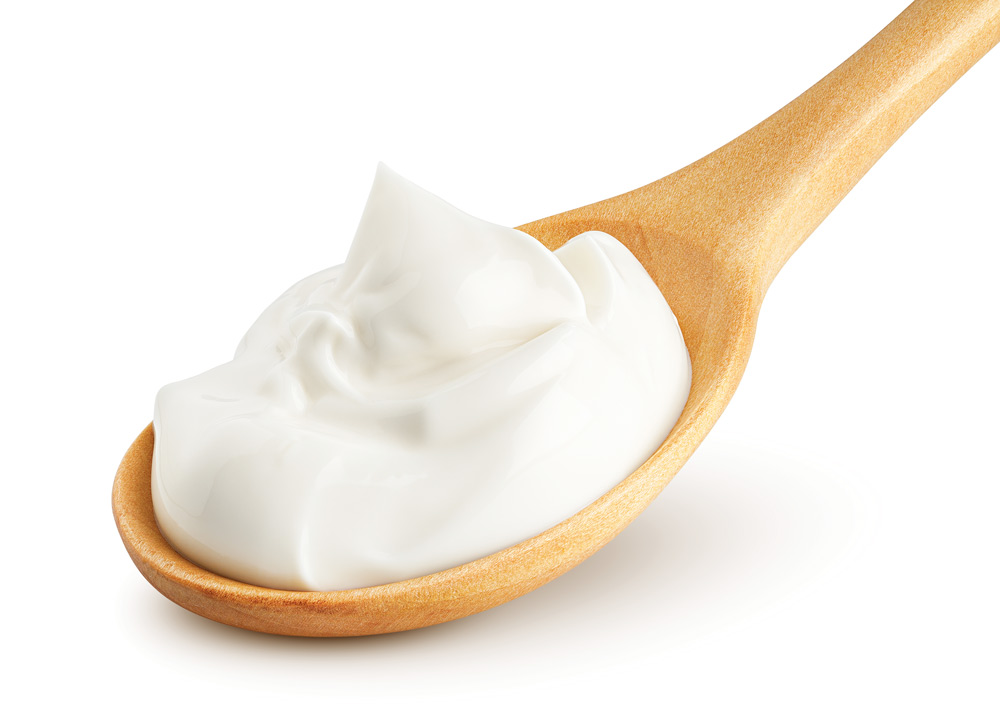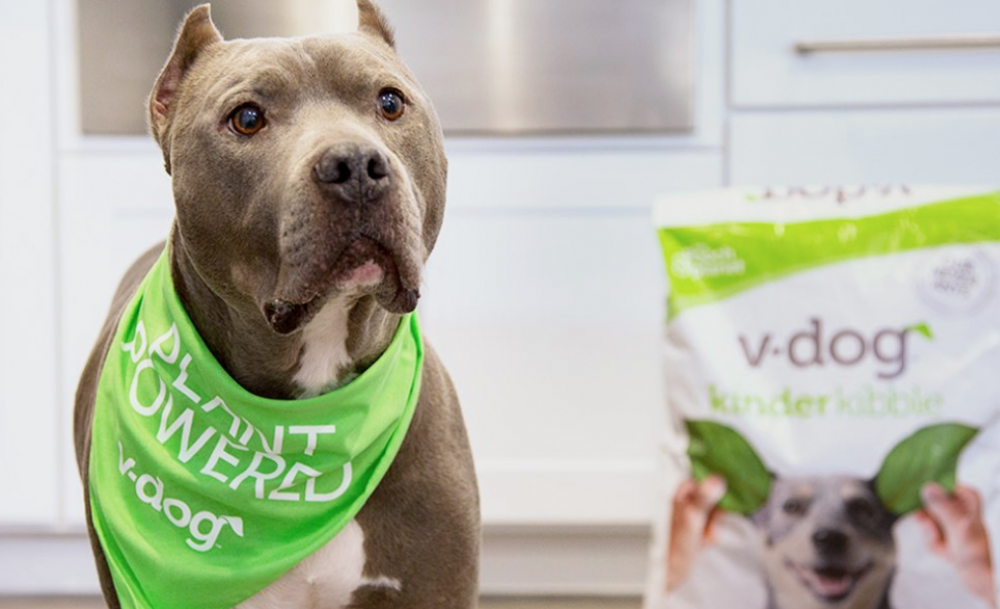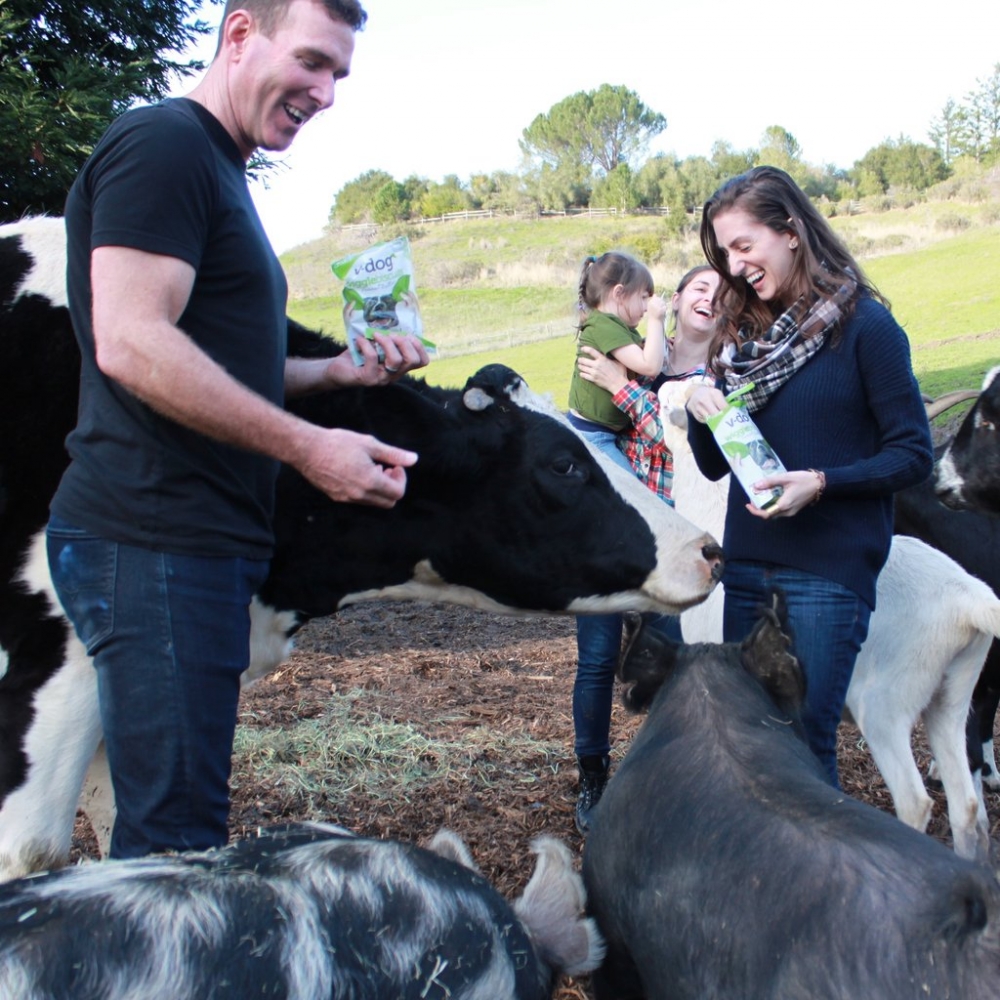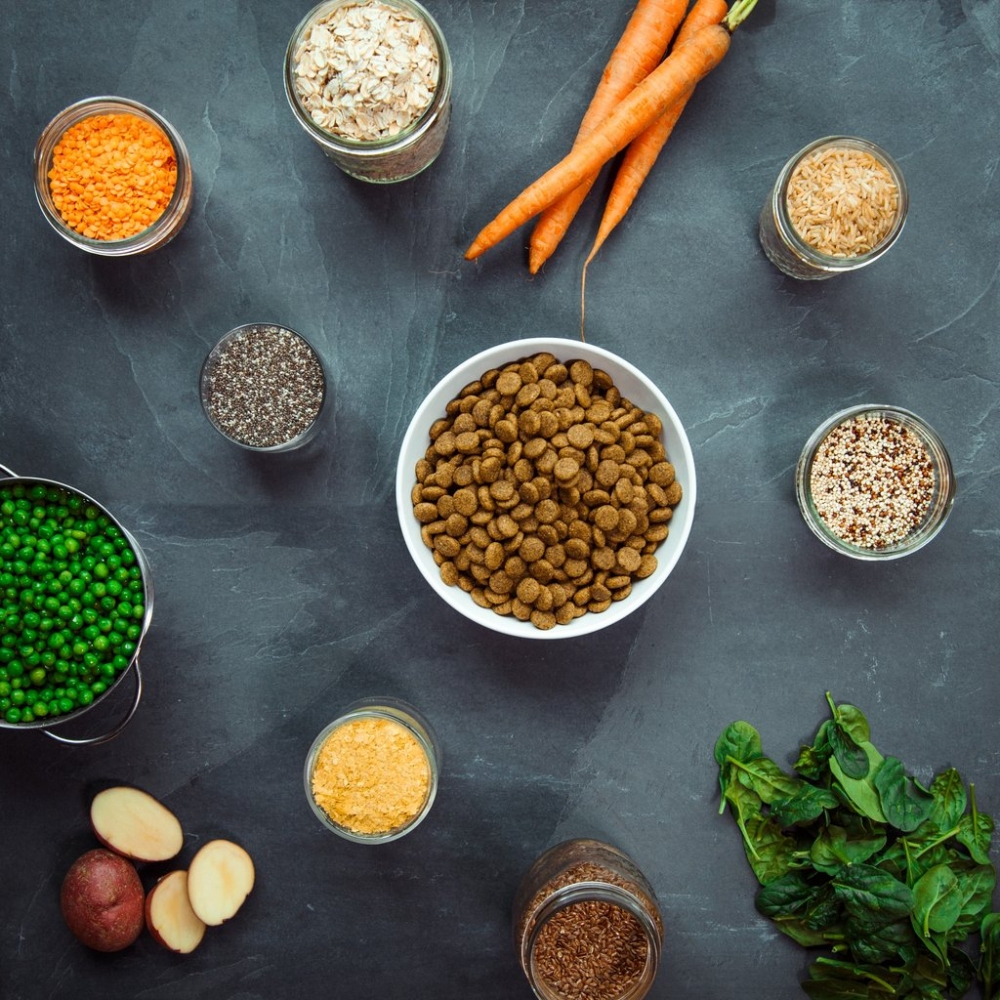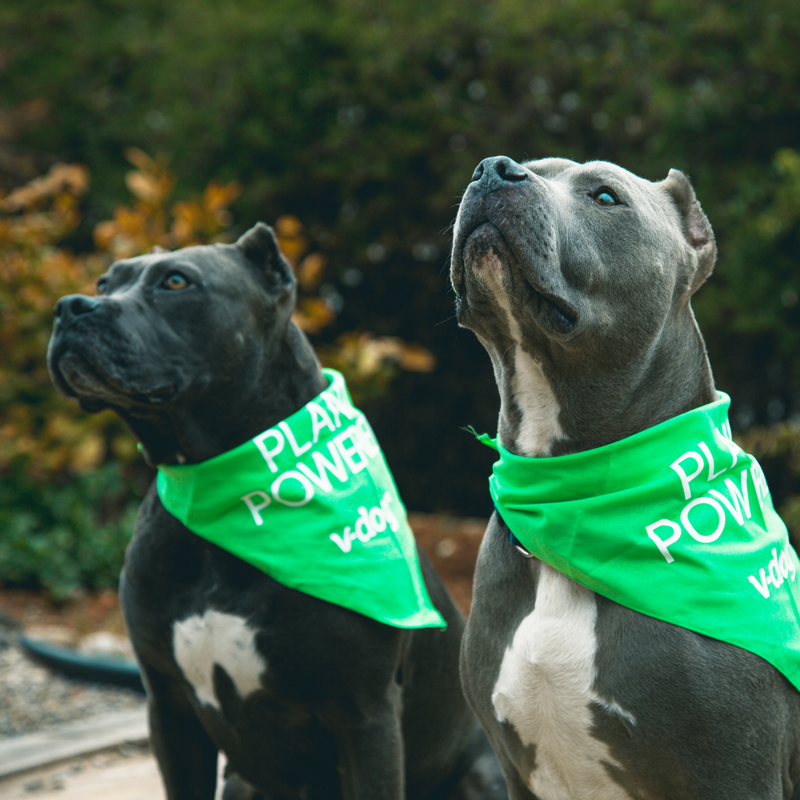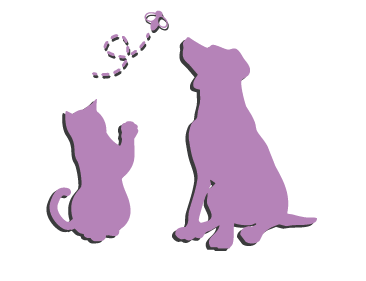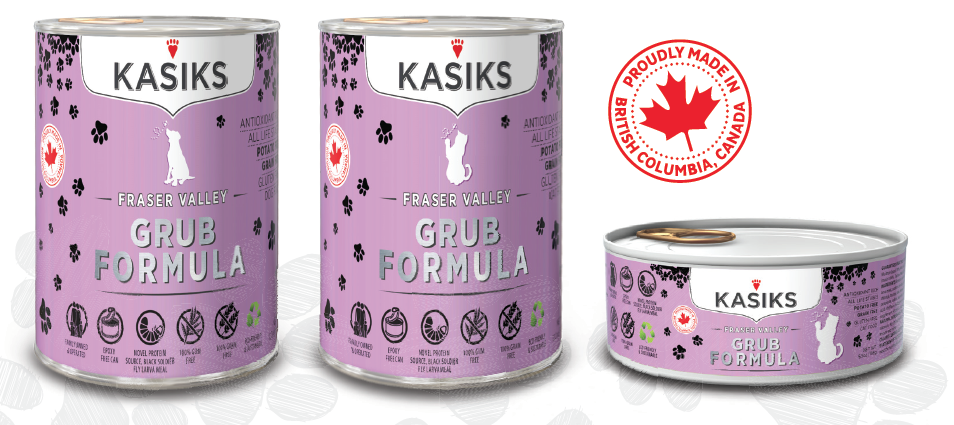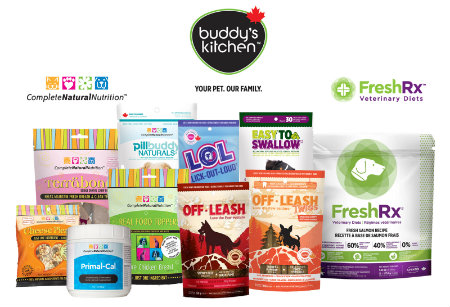- Dog CareDog LifeCommunity
- Photo Contest
Photo Contest- Giveaways
DIY Eat: Why You Should Give Your Dog Yogurt
Yogurt has a long, storied history, going all the way back to the Neolithic peoples of Central Asia, around 6000 BC, when herdsmen began milking their animals. Back then, storage containers were made from the stomachs of animals, and the milk naturally curdled and fermented, helped along by the natural enzymes found in the stomachs.
Yogurt is recognized by so many names around the world—katyk, dahi, zabadi, mast, leben raib, roba, cuajada, dovga, matsoni—and they all share the same history. As far back as 6000 BC, Ayurvedic writings referred to the health benefits of fermented milk. Even Genghis Khan, founder of the Mongol empire, is said to have fed his entire army yogurt because he believed that it instilled bravery in his warriors. More than likely, it was the perfect food to calm stormy stomachs.
Stamen Grigorov, a Bulgarian medical student, was the first to explain the benefits of eating a diet that included yogurt by discovering Bacillus bulgaricus, a lactic acid that is still used in today’s yogurt cultures. The first yogurt laboratory and factory were opened in France in 1932; you know it as today’s Danone Yogurt.
Dr. Martin Goldstein, author of “The Nature of Animal Healing,” says that healing all starts with food. He writes of yogurt, “Just as it helps us by providing friendly bacteria for our digestive tracts, so it helps pets, especially those with gas or diarrhea, and should definitely be given in conjunction with antibiotics for digestive support.”
Adding yogurt to our dogs’ diet provides them with a valuable source of protein and calcium, along with magnesium and potassium, vitamin D, K2 enzymes, essential fatty acids and whey, and its probiotics help to support their gastrointestinal system and boost immunity.
If your dog has been prescribed antibiotics, the probiotics in a dollop of yogurt can help to restore healthy intestinal flora thanks to strains of healthy bacteria that include Lactobacillus bulgaricus, Steptococcus thermophiles, Lactobacillus acidophilus, Lactobacillus casei, and Bifidus. It’s no wonder that yogurt is considered one of the world’s super foods.
Make Your Own Pet-Friendly, Probiotic-Packed Old Fashioned Yogurt
This recipe was taught to me many years ago. It is a generations old Eastern European recipe. It really, really works and it’s great for your whole family, dogs included!
Ingredients
*Choose organic ingredients whenever possible.1 litre of whole milk, for example, homogenized cow milk or whole, naturally homogenized goat milk
1 small container (175 grams) of Balkan style yogurt (or goat milk yogurt, water buffalo yogurt, or sheep yogurt)
Instructions
1. Place milk in a large pot and bring to a boil. This is a “watch the pot carefully” recipe. Small bubbles will form around the edges first, and then bubbles move towards the center. Watch the milk carefully to ensure it doesn’t burn. You can do this by simply turning the heat down just before the milk reaches a rolling boil. Boil the milk for 15 minutes. A timer is useful for this step.
2. After 15 minutes, turn the stove off, and let the milk cool down until it is lukewarm. Do not remove the pot from the stove.
3. Then, in a small mixing bowl, whisk a small amount of the yogurt with a small amount of the boiled milk until smooth. For example, combine four tablespoons of milk and six tablespoons of yogurt. The more yogurt used, the more firm your own yogurt will be.
4. Place the mixture back in the pot that contains the rest of the milk. Cover the pot and leave it until yogurt has formed. You can check the pot from time to time. As the yogurt is forming, it looks a bit like Jell-O. The yogurt can take anywhere from eight to 12 hours to form. Semi-firm yogurt, perfect for dips, sauces, and meal toppers, will be ready in as little as four hours if you use whole goat milk. Whey will come to the top of your homemade yogurt, and it is good to use too. Serve as is, or, if you prefer to strain your yogurt, skim the whey (the liquid-y part) from the top.
5. Store homemade yogurt in containers and refrigerate or freeze. Homemade yogurt will last as long as commercial brands do.
6. Fruits, vegetables, herbs, and spices can be added to yogurt after the base has been prepared.
Yogurt All Around!
Remember, when purchasing store-bought yogurt, carefully read labels to ensure that it contains no artificial colours or flavours, and that no sugar or sugar substitutes have been added, particularly xylitol, which is toxic to our pets.
Yogurt offers lots of goodness to your whole family and can be a beneficial addition to your dogs’ daily diet or as a nutrient dense treat.
For More Great DIYs go to moderndogmagazine.com/diy-projects
Apple Cider Vinegar For Dogs Everything You Need to Know
Apple Cider Vinegar for Dogs, Why you may want to try it for your pet!
"Many vitamins, minerals, and other nutrients and substances are available in Apple Cider Vinegar (ACV) to improve the health of your dog,” says Dr. Alicia McWatters, Ph.D. and Certified Nutritional Consultant.
ACV provides dogs with enzymes and a whole host of important minerals and vitamins, including potassium, calcium, magnesium, sulfur, iron, bioflavonoids, beta-carotene, and vitamins C, E, B1, B2, and B6. It also contains tannins from the crushed cell walls of fresh apples, as well as pectin (fiber) and malic acid.
How ACV can benefit dogs:
- Boost the immune system.
- Improve skin and coat (i.e. hotspots, dander, itchiness, fleas).
- Fight urinary tract infections.
- Thought to help with arthritis, cancer, kidney and bladder stones, metabolism, and candida (aka yeast), among other conditions.
English Bulldog News (englishbulldognews.com) shares, “Yeast is a huge problem amongst this breed. One common denominator in combating canine candidiasis is ACV. The reason being is that ACV tackles yeast and fungus from the inside out by creating a more alkalizing environment which, in turn, encourages the growth of beneficial bacteria. By adding live cultures to your bully's diet, you are helping to combat and/or prevent yeast overgrowth. Signs of yeast in bulldogs include brown, red or "off" colouring in the fur (especially below the eyes, on the chin, and in-between their paws). Other signs include brown discharge in the ear, constant itching or licking of paws, rubbing head/ears against surfaces to relieve itching. If you notice these signs, there is a good chance that your precious pup is battling yeast and he/she should be examined by your vet to ensure a proper diagnosis. Upon a positive diagnosis of yeast, ask your vet if it would be a good idea to start an Apple Cider Vinegar regimen.”
Want to give Apple Cider Vinegar for dogs a try?
Be sure to use organic, unpasteurized (raw), unfiltered, naturally fermented ACV. Look for the sediment in the bottom called “the mother” and you’ll know you’ve got the right stuff.
*Do NOT buy white distilled vinegar, as it has none of the beneficial elements of ACV.
Dosage:
Dr. McWatters recommends 1 teaspoon for small dogs and 1 tablespoon for medium-large dogs, added to their food once a day (others recommend adding it your dog’s drinking water but some dogs don’t like the taste).
You can also use it as a:
Conditioning Rinse. Use diluted ACV as a final rinse after bathing your dog. Dilute 1 cup ACV with 4 cups of water. Pour the rinse over your dog’s coat. Always avoid the eye area and always dilute—ACV can sting if undiluted.
Paw soak. Fill a container (large enough to submerge paw in) with warm water and add a cup of ACV. Soak your dog’s paw for 5 to 10 minutes.
Before you try apple cider for dogs you may want to check with your Vet first!
Rayne Clinical Nutrition | The balance between whole foods and scientific research
We all want to ensure that our dogs are getting the very best, especially when it comes to their diets! To make sure that all of our dog’s nutritional needs are met, we love Rayne Clinical Nutrition who formulate diets that bring something different to the market.
They start by designing and formulating their food in collaboration with some of the finest minds in veterinary medicine and nutrition, developing a range of formulas that are multi-indication, for the toughest clinical cases and that are also great for multi-pet homes.
What’s more, Rayne’s fundamental nutritional philosophy is to provide as many nutrients as possible from whole food ingredients, adding less and supplementing less and are all free from corn, wheat, soy, and animal by-products to deliver exactly what your dog (or cat) needs to perform their best!
Learn more at raynecanada.ca
Top 5 Benefits of a Vegan Dog Diet
Plant-based diets offer a wide range of health benefits, which makes them a great fit for dogs of all shapes, sizes, and ages. If your pup suffers from chronic symptoms like itchy skin, digestive issues, joint pain, or eye discharge, it might be time to try a nutritionally-complete vegan diet. Below are 5 incredible health benefits that you can expect when switching your pooch to plant-based.
Allergen-friendly
According to experts at Cummings Veterinary Medical Center at Tufts University, "The most commonly reported food allergies in dogs are chicken, beef, dairy, and egg…What surprises many pet owners is that grains are actually uncommon causes of food allergies – most pets are allergic to animal proteins." Food allergies can cause a variety of symptoms in dogs, including rashes, dry and itchy skin, loose stool, constipation, gas, vomiting, eye discharge, yeast infections, and fur loss. Exposure to allergens over time is a health concern, as it compromises the immune system. Plant-based diets are naturally allergen-friendly, meaning that your pup can finally get some relief from those chronic, uncomfortable symptoms.
Easily digestible
Vegan formulas commonly help dogs with a whole range of digestive issues, from loose stool to constipation to gas. Conversely, meat-based dog foods are often hard on the digestive system due to the acidifying and inflammatory effects of animal protein. Because plant-based ingredients are gentle on digestion and often free of irritating allergens, they can help clear up symptoms in even the most sensitive of pups.
Anti-inflammatory
Compared to animal-based foods, plant-based foods are naturally anti-inflammatory, which means they can help relieve joint pain and arthritis (making them an excellent fit for senior dogs). Dogs who switch to a vegan diet often experience improved mobility, which means stronger muscles, longer walks, and more endurance at the dog park.
Weight management
Made with lean and easily digestible ingredients, vegan dog food formulas are a great choice for dogs who have trouble maintaining a proper weight. Overweight dogs often shed excess pounds after making the switch, helping them stay lean and live longer, more active lives.
Improves energy levels
Switching your dog to a vegan diet can help them regain puppy-like energy due to the clean, readily-available nutrition (without the negative effects from meat-based and byproduct-heavy food). Plant-based pups often find boundless energy on their new diets, which contributes to a higher quality of life.
Is your pup ready to make the switch to a cleaner, healthier diet? At v-dog, we've seen thousands of dogs reap the health benefits of our 100% plant based products, receiving A+ checkups at the vet. Our kibble is nutritionally complete and balanced, meets AAFCO guidelines, and free of byproducts, fillers, and common allergens. Learn more about what we do at v-dog.com.
Introducing the Fraser Valley Grub Formula from KASIKS
Taplow Ventures LTD., is pleased to announce a NEW and NOVEL protein source with the introduction of our canned Fraser Valley Grub Formula. KASIKS canned products are produced at Coastwise Processors Inc., our human-grade canning facility located in British Columbia, Canada.
Insect protein has become increasingly popular over the past few years as part of the human diet.
Insects are Eco-Friendly, Novel, Clean & Healthy:
Insect protein is equal and in some cases higher in protein and fat than traditional sources
Zero methane production
No added hormones, antibiotics or steroids
GMO Free
Reduced water consumption in farming insects over that of other animal protein options
Low environmental impact and source of excellent nutrients
Kasiks Pet food is sourcing our soldier fly larvae from within our community. Enterra Feed Corporation is a CFIA approved farming facility located in British Columbia, Canada. Enterra feeds excess fruit, vegetable and grain from human food production.
“North American and European consumers are continually seeking unique quality protein sources for their pets. Insect protein is a part of many peoples’ diets. Our KASIKS Fraser Valley Grub formula contains insect to enhance the fat and protein of the diet.” – Michael Florian, President & Founder KASIKS Pet Foods
Charlee Bear® Products Introduces GRAIN FREE BEAR CRUNCH—Dog Treats for a Healthy Lifestyle
Charlee Bear® Products created original Charlee Bear Dog Treats over 20 years ago. Leading the way in providing Natural, Low Calorie Treats. We were convinced that treating for training or just for fun is an important way to build the bond between you and your doggie companion. We choose simple, natural ingredients and real meat and cheese to create a great tasting treat that dogs would love. At only three calories per treat you can treat often. We made them “Pocket Perfect®” so you could put a handful in your pocket and take them with you on walks and outings.
Our treats were tested by many professional trainers and dogs with rave reviews. We wanted consumers to be able to understand our label so we kept it simple. We made four great flavors; Liver, Cheese & Egg, TukeyLiver & Cranberries and Chicken Soup & Garden Veggies.
NOW we are introducing our latest Natural, low calorie treat, GRAIN FREE BEAR CRUNCH. With a new process these grain free treats have a SPECIAL SUPER LIGHT CRUNCH all of their own. Still “Pocket Perfect®” and less than 3 calories each, they are also perfect for training or any time. We had fun with three great new flavors; Chicken Pumpkin & Apple, Bacon & Blueberry and Turkey, Sweet Potato & Cranberries. Our doggie fans gave us high approval ratings—all paws up.
Charlee Bear has many loyal fans who wanted to tell about how much they love our treats. We hope you will watch our video. Our treats are available nationwide at major pet retailers and smaller pet supply stores. Check our website www.charleebear.com and visit us on facebook for contests and fun, www.facebook.com/charleebear
Boo Boo’s Best Artisanal Raw Meals for Dogs
Introducing Boo Boo's Best, Artisanal Raw Meals for Dogs!!
This terrific, high-end raw dog-food is made from the most exceptional whole, natural, healthful ingredients available, with no grains, corn, soy or synthetic ingredients of any kind.
Focusing on novel proteins, Boo Boo's Best uses grass-fed meats, organs and bones from animals raised on pastures with no antibiotics or hormones; organic vegetables; green tripe; trachea; whole, wild-caught sardines and anchovies; and great additions like organic alfalfa, kelp, and spirulina powders.
Boo Boo's Best's complete meals are available in tubs and our fabulous one-of-a-kind bonbons: our complete meals shaped into 1 oz bonbons and rolled in an assortment of chia seeds, flax seeds, pumpkin seed powder and shredded coconut!! They look good enough to eat!!
This amazing food is hand-made in small batches in California and shipped frozen anywhere in the continental United States.
Email info@booboosbest.com to receive a product sheet, and ask about retailer consignment opportunities!
Complete Natural Nutrition and Buddy’s Kitchen are Sister Companies Dedicated to Maximizing your Pet’s Health and Happiness
In 2005, Complete Natural Nutrition set out to provide frustrated pet parents with treat solutions for their beloved pets; pets with specific health issues like diabetes, obesity, finicky, allergies or on restricted diets. We set out to provide discriminating pet parents, who read labels and who want North American made and sourced ingredients, with the world’s healthiest treats.
In 2011, Buddy’s Kitchen was founded as a ‘next-generation’ manufacturing company dedicated to lifting the ‘veil of secrecy’ from pet food manufacturing. Located in Aurora, Ontario, Canada, Buddy’s Kitchen was built from the ground floor to establish a transparent and honest ‘kitchen’ where all facets of production are controlled by our own team of experts. Buddy’s Kitchen represents a first in pet food manufacturing where pet parents are always welcome to visit our open concept kitchen, watch production and ask questions as fresh food and treats are produced.
Buddy’s Kitchen specializes in the manufacturing of fresh food, and is currently leading the way with exciting development within the world of Veterinary Diets. FreshRx, a fresh, gently cooked diet, is sold exclusively by leading veterinarians across Ontario, Canada. As a rapidly growing concept, feeding fresh food provides the best in safety and health for both your family and for your pet. To learn more about the countless benefits of feeding fresh, visit www.freshrx.ca .
Combined, Buddy’s Kitchen and Complete Natural Nutrition, create an innovative and cutting-edge one-stop shop for science based supplements, healthy treats and all-natural fresh food. Our leadership team combines over 75 years of food and animal nutrition experience, led by Chief Dog Wagger Peter Kaufman, Chef Maurizio Barbieri and board certified animal nutritionist, Dr. Gary Pusillo.
Our passion is our promise. We guarantee to always be on the side of pet parents and deliver leading health solutions that are the best in the world, with values based on honesty, integrity and trust.
To try Complete Natural Nutrition or Buddy’s Kitchen today, use the code “family10” for 10% off your first online order! Americans can head to www.completenaturalnutrition.com and Canadians can head to www.buddyskitchen.ca.
DIY Eat – Waste Not Want Not
My grandmother—we called her Mama—would always say “don’t throw those peelings away; we can use them.” She showed me how to keep vegetable peelings and cuttings to make stock and how to make soup from leftovers that I was about to throw away. When I would cut the fat off the meat before I cooked it, she would say, “Don’t throw the fat away; I’m going to use it.”
I have had many lean years in my life and have put Mama’s advice to practice, thankfully, so I always had enough food to make a healthy dinner for my family. Now that I cook for my dogs, some of my neighbours and their dogs, my brother who shows up for care packages, and for my son, I’m still glad Mama taught me to be frugal with food. Below are a few general tips that have kept my family and my dogs eating well throughout the years:
* When buying meat in bulk, divide meats into smaller meal-size portions as soon as you get home from shopping. Store what you will be cooking first in the refrigerator and freeze the rest.
* When peeling or preparing vegetables on the “Good Veggie List” for dogs, save all the peelings and cuttings like carrot peels, celery tops, bell pepper tops, squash ends, and so forth and freeze them. Pull them out when making bulk dog food or a broth for either a soup for the family or maybe a gelatin for the dogs.
* When cooking a chicken, turkey, or some other meat that has bones, save the carcasses and the bones and freeze them. Do the same with the meat drippings. Boil them to later to make a delicious healthy broth.
* When cutting fat from roasts, chicken, duck, or turkey, freeze the fat to render later. Rendered meat fat makes great flavoring for vegetables.
* Save squash and pumpkin seeds to either lightly roast for snacks or to use raw in bulk dog food.
* When juicing, save all the pulp for baking items such as high-fiber muffins, or for bulk dog food.
* If your family eats rice, quinoa, millet, or oats, cook up a large batch every two weeks and freeze in individual servings. That way all you have to do is defrost and add veggies and a protein.
These are just a few commonsense ideas, but they really help save time and money.
From Dog-Gone Good Cuisine by Gayle Pruitt; photographs by Joe Grisham. Copyright © 2014 by the author and reprinted by permission of St. Martin’s Griffin.
Can Dogs Eat Cabbage?
Can dogs have cabbage? The answer is… yes! And many dogs love it. Purple, savoy… all types of antioxidant-rich cabbage is safe for dogs to eat and even beneficial. It aids in digestion, is good for the skin, and is cancer-fighting. But it can also cause gas, so introduce slowly and only feed a little bit, such as a sprinkling of chopped up cabbage on top of your dog’s dinner. Furthermore, though raw cabbage is perfectly fine in smaller quantities, it does contain a natural compound called thiocyanate which suppresses the thyroid gland and over time can create hypothyroidism if regularly feeding large amounts. If you lightly cook the cabbage then you deactivate the thiocyanate, so cooking the cabbage is advisable if feeding regularly in larger quantities. You have to eat a lot of raw cabbage over multiple days to create the hypothyroidism but it can be done, so cooking and/or moderation is key.
Dogify Your Inbox
Sign up for the FREE Modern Dog Magazine newsletter & get the best of Modern Dog delivered to your inbox.
"*" indicates required fields
By clicking the arrow, you agree to our web Terms of Use and Privacy & Cookie Policy. Easy unsubscribe links are provided in every email.
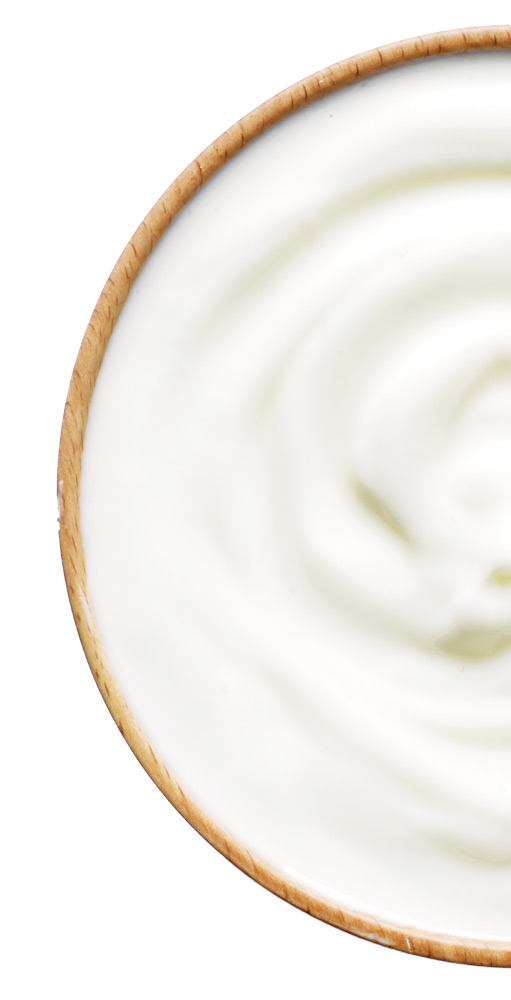 Yogurt has a long, storied history, going all the way back to the Neolithic peoples of Central Asia, around 6000 BC, when herdsmen began milking their animals. Back then, storage containers were made from the stomachs of animals, and the milk naturally curdled and fermented, helped along by the natural enzymes found in the stomachs.
Yogurt has a long, storied history, going all the way back to the Neolithic peoples of Central Asia, around 6000 BC, when herdsmen began milking their animals. Back then, storage containers were made from the stomachs of animals, and the milk naturally curdled and fermented, helped along by the natural enzymes found in the stomachs.